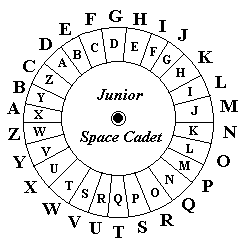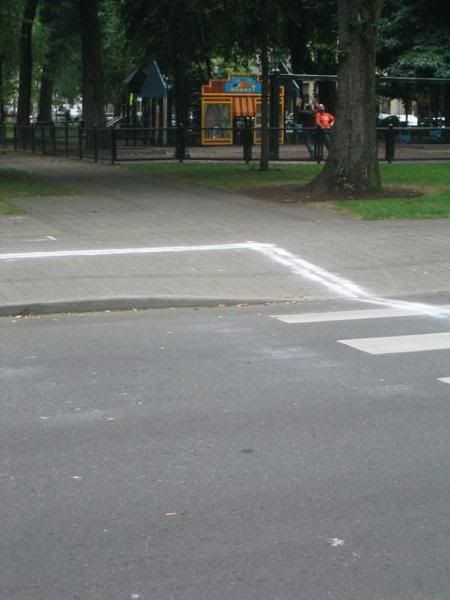
The good folks at the Pioneer Press's
City Hall Scoop blog recently posted
some interesting legal documents about the political battle over the LRT route through the U of MN.
I
wrote about this a while back, and each time I walk past the student union and around the mall area I become more convinced that the LRT/ transit / pedestrian option down Washington Avenue is a very good thing.
That's why these documents strike me as so wrong-headed. And that's why I'm going to present them to you,
Decoder-style.
So, enjoy a decoding of the University's
recent letter to Peter Bell, chairman of the Met Council. As you can see from
their response, they probably think these arguments are as stupid as I do...

Hi! I'm the University of Minnesota, and I'm important. Remember how I said I wanted a tunnel through my campus, so that those nice little college kids wouldn't have to step outside as they shuttle from East to West banks through their nice little tunnels like nice little gophers trapped in a lab experiment?
Yep. That was a good idea. Did you know we already have tunnels tunneling all over the damn place. Why can't your new train do that too?
Instead, you're thinking of doing what? A transit and pedestrian mall?
You know, that would displace our four lanes of traffic cutting through the heart of what was meant to be public space. Does that sound like a nice thing to do?
That should be "evaluated carefully." I have a feeling it might have "potentially adverse effects." It may result in "unsafe and dysfunctional traffic patterns"! Yes, that's right, I said dysfunctional.
(No, no, no. I'm not talking about the current state of the U of MN's streetlife, the way in which people shuttle from building to building in little tunnels, never seeing the light of day, or are forced to hold rallies, play frisbee, and be barraged with corporate giveaways in this little tiny square of grass next to a four lane road...)
I'm talking about damage to our "integrated transportation system." You know, all the cars that stream into and out of our many, many parking lots, and will soon, very soon, be heading to and from the new giant taxpayer-funded TCF Bank football stadium. Yes, yes! Go Gophers!

Oh did I say that a pedestrian and transit mall MAY have adverse effects. I had that wrong. It WILL have "significant adverse effects"! (Did you see what I did there? I make it more
significant.)
Yes, "many tens of thousands of students, visitors, and patients" will be distressed by not having to dodge a constant stream of cars. You know, all the people going to and from the hospital because they were just run over by SUV's streaming off the Washington Avenue bridge? What will they do?
"In essence," it will mess up the very lives and souls of "hundreds of thousands of individuals who come to use the University's resources!" That includes all the people in Duluth, and Crookston, who will feel the pain of Gopher solidarity as our fellow rodents are forced onto the sidewalks, lawns, and streets to suffer the cruelty of the sun's rays.

OK, so the study to which I'm about to refer doesn't really apply to this situation, but trust me when I say there will be "serious adverse effects!"
In fact, the study was done ten years ago by an undergraduate, but it was for a senior paper and they used a computer and everything, and it clearly showed that there will be "adverse impact", especially to our "sensitive research equipment" which doesn't respond well to trains.
Did I mention that we're a university? And that we have scientists and stuff, with "sensitive research equipment"? Trust me, you wouldn't understand what that means.

OK. Now I'll explain in my scientific way about the "unsafe and dysfunctional traffic patterns" I mentioned earlier.
You see, a while back we used our sensitive scientific equipment and made a model. You know, like a toy train? Only it was on a computer. It's a very, very big computer, too. In fact, it's about the size of an SUV.
It turns out, when you have four lanes of traffic streaming across the Washington Avenue Bridge, AND you put a big train in the middle of all the traffic, "it will not work".
That's scientist speak for 'it'll be really bad.'
In other words, it'll have "potentially serious adverse effects!"
Got that?
What?
You want to know what the effects are? Dammit, I told you a I'm a University, with scientists and stuff... I have "sensitive research equipment"!
OK. OK. OK. Here are the terrible, terrible effects. Prepare for total "dysfunction"!!!

Yes, yes. There will be gridlock! Even more gridlock than we already have!
You won't be able to drive to the clinic because of the gridlock!
All the roads will have gridlock! Other roads, too, will be filled with cars. Even more filled with cars then they already are!
(Yes, I know the roads are already filled with cars... I drive to work every day, you know. God! It takes frikkin' forever to get to my sweet parking spot. All these goddam students keep crossing the street in front of me! There's like thousands of them! They keep coming, and crossing, and crossing and coming, and crossing, They're like little rats... like little gopherrats... And they keep giving me funny looks. Like, "Dude, What's your problem?" or "I'm trying to cross the street." Well, I'm just trying to drive! What is
their problem? Maybe Randy Moss was right! I gotta get outta here. Where's my damn Valium? ........ Oh. Excuse me. Where was I?)
And these cars, when they're not stopped still for hours, will be running over pedestrians because we're going to take all the sidewalks away. Yes, that's right. We're going to remove all the sidewalks! And then these cars will have no choice but to drive directly on college students. They deserve it. Did you know they like to lie down in the street. Cars everywhere, driving on those bastards! What do think of your Hockey Riot now, you little drunken peon. I went to Yale!
"Electromagnetic fluctuations!" "Sensitive Scientific Equipment and Research!"
Decreased bus ridership! There will be fewer buses with riders because the buses won't be able to move because of the gridlock and all the people will have been run over by gridlocked cars anyway! (Oh yeah, buses. Thanks for paying for those by the way, Met Council.)
Oh, what the hell.

OK. You got me.
Though our scientific study was in fact performed on sensitive research equipment, yes, I admit that, as I briefly mentioned, it was not at all a study of a pedestrian mall and is therefore completely irrelevant.
Aren't you smart, you little transportation engineer dweeb. Does MN-DOT have a football team? I don't think so.
Go Gophers!

God this sucks.
All right, Met Council. Here's the deal.
If you go over my head, and ignore all the serious findings of our sensitive research equipment, we're going to have to ask -- nay, DEMAND -- some "mitigation costs".
Yes, that's right.
All these "potentially serous averse impacts" and "unsafe and dysfunctional" disruptions of our "integrated transportation system" do not come cheaply.
We're going to have to demand One Million Dollars (!) in "mitigation costs". Yes! That's right.
[...]
Oh. My advisors have just told me that that's not very much money.
Well, I'll look into that. But let's just say I'm gonna be asking for a lot. You see, there are "potentially serious adverse impacts". It will mean...
[dramatic pause]
It might mean the "relocation of the University Medical Center Loading Dock from its location on East River Road"!!!
(What? That's the best you guys can come up with? I'm trying to sound dire, here. I'm in a letter to the Met Council, and we're trying to shake down some money! This is the best you can do? One lousy loading dock? Come on! What do I pay you for?)

Oh, yeah. That's right! Before I forget!
Our Northrop Mall is a historical district! One of the top ten most historical districts in the Big Ten!
And it has "historical attributes." A history professor just told me that! Yeah, this book says it has "possessing integrity of location, design, setting, materials and blah blah blah" God this is boring. What the hell does that mean?
Anyway, it's old. And it has "historical attributes," and let me tell you that having a goddamn train running through the middle of it does not, I repeat, NOT "comport with the District's historical attributes."
Did you know it was designed by Cass Gilbert? It's true! I just looked it up. It says here he designed it to be impressive and classical and, here I'm quoting, "proved that the University was coming into its own as a world-class institution of higher learning."! (That's me! A world-class institution of higher learning? Did you know I'm going to be the top three research university in the world?)
And I'm telling you, buster, a top three research institute in the world isn't going to like having Cass Gilbert's magnificent design ruined by a train running through the middle, especially a stupid little yellow one with a stupid little horn that will "create visible and auditory interferences", and that "does not comport with the District's historical attributes!"
What's that?
Cass Gilbert didn't design his glorious Northrup Mall to have a four lane freeway going through the middle of it, especially one with a giant trench filled with cars separated by a concrete wall adorned with a pointy black fence bearing a sign showing a person crossed out by a red line?
You think you know everything, don't you...

Did I mention that we have sensitive research equipment?
Maybe I should add that our equipment is "highly sensitive". Will that convince you?
We're dealing with "unknown costs" here!

Dear Met Council.
Suck it.
Haha. J/K BFF!
Sincerely Yours,
University of Minnesota
Also:Bill here again. I'm not the University any more.
I just wanted to mention that today the University of Minnesota is having a "forum" on the current plan for the Light Rail and whether or not a possible pedestrian mall running through campus is a good thing. Hooray! (Don't be swayed by what you've just read.)
The current plan for the Central Corridor light rail line would create a
pedestrian mall along Washington Avenue on the University of Minnesota. What
might this mean for the campus?
Come hear a panel of experts, including Transit for Livable Communities
co-founder John DeWitt, speak at this upcoming forum:
Campus 2014: What will U of M campus transportation look like?
EcoWatch presents a multimedia forum on how the Central Corridor Light
Rail Line Will Transform Campus Transportation
Tuesday, April 29th: 6:30 PMWest Bank Auditorium (basement of Willey Hall)
On Tuesday April 29th the student organization EcoWatch will be hosting a Light Rail Forum in the West Bank Auditorium at 6:30PM. University transportation engineers, city planners, and other experts will be on hand to discuss how the Central Corridor light rail plan will change the campus layout and how it will affect students' daily lives. Could the U really turn into a campus without cars? Come find out!
Speakers include:
John Dewitt-co-founder of Transit for Livable Communities
Nancy Homans-City of St. Paul
David Levinson-U of M Civil Engineering Professor
Jan Morlock-Liaison with University and surrounding neighborhoods
Bill Stahlmann-U of M Parking and Transportation Services-Transit Manager
Peter Wagenius-Senior Policy Aid, City of Minneapolis
























































